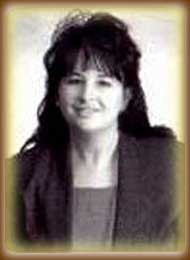 |
- Column - |
||||||||||||||||||||||||||||||||||||||
|
By Natalie Buske Thomas Author of The Serena Wilcox Mysteries for adult readers and The Magic Camera educational mysteries for kids  Website |
|||||||||||||||||||||||||||||||||||||||
|
|||||||||||||||||||||||||||||||||||||||
| June 25/2000 Writing for the Big and the Little:Top 5 Issues For authors who write for both adults and children By Natalie Buske Thomas I've been asked about the differences between writing for adults and writing for children. It's a good question, one that I didn't think to ask myself. It's taken me a long time to come up with some answers. Writing fiction is often easier for me than writing about the process of writing. But after much consideration, I came up with a list of five issues concerning writing for adults versus writing for children. 1. Feedback I didn't realize how important feedback is until I published the first book in my juvenile series. Most children will say "I liked it, it was good," and getting anything more from them is often an exercise in frustration. Some kids do articulate WHY they liked (or didn't like) the book, but most don't. Adults, on the other hand, are far more likely to give detailed reviews of books, with or without solicitation for them. Feedback keeps me "in the know" about what readers are responding to in my writing: What do they want more of? What do they want less of? Was the story comfortable to follow or did I lose my audience at times? Did they "get" my humor and did they enjoy it? When it comes to writing for children, I find that I'm more in the dark. It helps if I ask kids to compare my book to others they have read. I also gain insight by asking questions like, "How would you change the story if you could?" 2. Generation Gap I create characters based on how I felt when I was a child. Part of me is *still* this child, just in a larger body, with more responsibilities and life experience. But I have no experience with being a kid in the year 2000. I do worry that my age shows when I write for a young audience. Fortunately I have children of my own. My daughter is a bookworm and is "in the know" about kids' books. She's also one of those invaluable kids who has no problem giving detailed feedback. I rely on her to tell me if my voice sounds off key. 3. Comprehension Level Surprisingly, this is one area that doesn't seem to hold any major differences. I feel that adults need clarity just as much as children do. We read fiction for enjoyment and I can't imagine enjoying a book that makes the reader strain to follow the story. Even though the plot for adult readers is more complex, I try to follow the "keep it simple" principle for both adult and juvenile readers. Adult readers are often reading to unwind from a busy schedule. My objective is that my story will give readers something to think about, not that my readers will have to think hard to follow the story. 4. Attention Span This is another area where I believe that there is little difference between writing for adults and writing for children. Clean sentences, varied in length, short paragraphs and snappy dialouge are important elements to keep books clipping along, regardless of whether I write for children or adults. Especially in the mystery genre, there's a need for stories to keep a tight pace. I try to keep these thoughts in my head: Does my writing slow down too much in sections? Are my paragraphs too long? Do I have enough variety in my vocabulary and sentence structure? Ultimately: Would I be bored if I were reading this book instead of writing it? 5. Target Market For my adult mysteries, the target market is easily defined. While some men have read my books, the majority of my readers are women ages 25-65. I also know the kind of books that my readers tend to enjoy: most are mystery fans and read/purchase new books regularly. The obvious target market for my children's series is "children ages 8-14" because that's what I set as guidelines for the book. Also, because my protagonist is a girl and the story feels (to me) like a mother-daughter kind of book, I assumed that most of my child readers would be girls, average age 12, the same age as the girl in my book. However, the children's series has a largely unknown target market. Many more boys than I expected are reading the book, and the age guidelines have no real significance. Parents, teachers and librarians are reading the kids' book, mostly to review it while considering my book as a suitable choice for their children or class. Some adults are reading it because the story appeals to them as a quick light read. I didn't expect so many adults to be reading my children's book, I definitely had tunnel vision in that area. The target market for my kids' books seems to be a wild card, while the adult mystery series has a well defined, fairly predictable target market. The young and the young at heart often want the same things. Whether writing for adults or for children, these remain the same: I need flexibility, a strong pulse on what my readers want, and the drive to keep writing. |
|||||||||||||||||||||||||||||||||||||||
|
|
|||||||||||||||||||||||||||||||||||||||